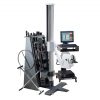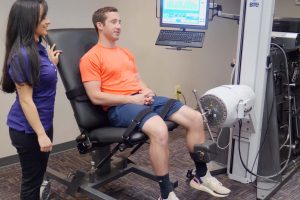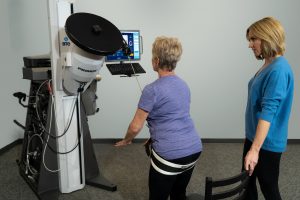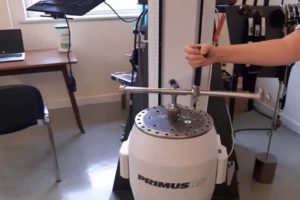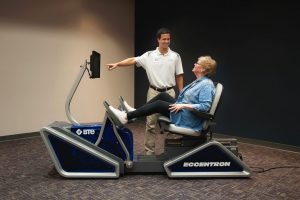
Protecting Your Patients and Business Through COVID-19
Practice ManagementAfter speaking with clinic managers from around the country, I have heard encouraging stories of finding new ways to keep your doors open – from patient treatment adjustments to seeking financial support.
Operational and Financial Strategies
Rehab clinics across the country are all getting a crash course in new ways to serve their patients and keep their staff employed during COVID-19. After speaking with clinic managers from around the country, I have heard encouraging stories of finding new ways to keep your doors open – from patient treatment adjustments to seeking financial support.
Reassure Your Patients
Times like these are when it’s most important to stay connected and remind your patients that you are a source of support. A touch of empathy and understanding can go a long way in building trust with your patients.
One of the first concerns your patients may have is the number of people milling about the clinic on a typical day. They will be concerned about a busy registration area, waiting room, or a busy treatment area.
We know that social distancing and stay-at-home orders have already reduced the number of people in a clinic at any given time. But not all patients realize how much it has changed in some clinics.
Common Changes to Clinic Operation to Help Reduce Contact
While patient volume is down, contact your patients to let them know the steps you are taking to ensure their safety. Some safety precautions I’ve seen are:
- Spreading out appointment times
- Instructing patients to wait inside their cars instead of a waiting room
- Extra disinfecting between each visit
- All staff wearing face masks
- Patients provided with face masks upon entering
- All staff remove their “outside” shoes when entering the clinic and change to a fresh pair
- Patients remove their shoes when entering and use disposable foot covers
- Senior citizens are scheduled separately – only on certain days, or only in the morning hours
Go Digital with Telehealth and Marketing
Consider offering telehealth services where allowed. Last month, CMS announced new CPTs and reimbursement specific to telehealth rehabilitation. Learn more in our article about telehealth for rehab during COVID-19.
With the healthcare and insurance landscape changing faster than ever, be sure to get the latest updates from payers to ensure your services will be reimbursed. WebPT offered a helpful webinar on this topic.
Another way to digitally engage your patients is with your marketing efforts. Many practice managers are using any down time to ramp up digital communication. Even if your clinic is temporarily closed, you can still stay connected to your community on social media, email, blogs, and your website. Now’s a great time to make those website updates you’ve been meaning to do or start that new social media account you’ve been wanting to explore.
CEUs and Other Learning Opportunities
When patient volume is low, consider inservice sessions and continuing education for your staff. Several CEU-accredited organizations have made remote online learning readily available with live webinars and on-demand:
In addition to the standard webinars, you can create your own classroom. If you have a laptop with webcam, you have everything you need. Various webinar apps allow an instructor to point the camera at themselves while they demonstrate their topic, then flip the camera to the student so they can demonstrate what they learned.
These services may not be CEU accredited, but they’re still very useful sessions to help expand your skills and remind you of applications you haven’t utilized in a long while.
In fact, we’re doing this for our customers at BTE. We do live demonstrations and training classes quite often and get very positive feedback regarding how much it helps practitioners discover additional applications to benefit their patients. If you are interested in a live, personalized webinar about your BTE system, email Cheryl Warner at cwarner@btetechnologies.com or call 800.331.8845.
Apply for Small Business Administration Disaster Relief
In addition to operational changes, you can also seek external financial supper for your practice. Congress recently passed the CARES Act which includes the Paycheck Protection Program. The PPP provides small businesses with funds to pay up to eight weeks of payroll costs including benefits. Funds can also be used to pay interest on mortgages, rent, and utilities.
Funds are provided in the form of loans that will be fully forgiven if used for payroll costs, interest on mortgages, rent, and utilities. To get the maximum benefit from the Paycheck Protection Program, you must keep employees on the payroll—or rehire quickly.
Forgiveness of the loan is based on the employer maintaining or quickly rehiring employees and maintaining salary levels. Forgiveness will be reduced if full-time headcount declines, or if salaries and wages decrease.
No collateral or personal guarantees are required. Neither the government nor lenders will charge small businesses any fees. Any loan payments will be deferred for six months.
Starting April 3, 2020, small businesses and sole proprietorships can apply. You can apply through any existing Small Business Administration 7(a) lender or through any federally insured depository institution, federally insured credit union, or a participating Farm Credit System institution.
While the first round of funding was depleted as of April 16, it is expected that more funds will be made available soon. Banks are encouraged to continue accepting new applications.
Check with your local bank or lending institution to see if they can handle the application because odds are, they can. Check the Small Business Administration’s COVID-19 resource page or the US Treasury’s COVID-19 page for more information.
Keep your Doors Open and Prepare
The demand for rehab will only increase as patients progress from the acute phases of COVID-19, are no longer contagious, and need to regain normal function. After weeks of inactivity, they will need physical rehab to regain the strength, balance and function to continue living a healthier life.
If your patients are recovering from weakened respiratory systems, consider emphasizing low-strain exercises like eccentrics. For example, the Eccentron provides closed-chain, eccentric-only exercise that uses 80% less oxygen than concentric modalities. And, recent research shows that patients achieve 4x higher muscle activation with the Eccentron, compared to other eccentric modalities.
Clinics like Vereen Rehabilitation Center are especially well-positioned to care for deconditioned patients or those with respiratory concerns using the Eccentron.
Helping patients recover from the effects of disease and injury has always been the mission of physical rehabilitation services. Rehab therapy clinics need to stay strong through these difficult times, for their patients and their staff.
John Vermette
Director of Provider and Product Management
BTE

